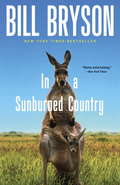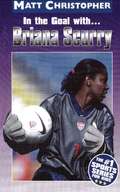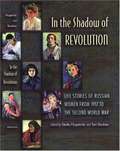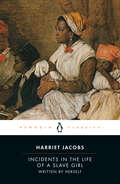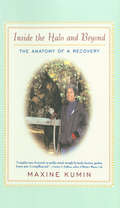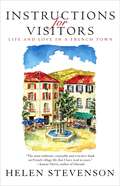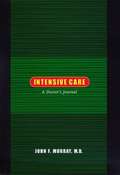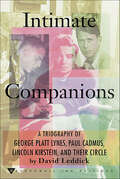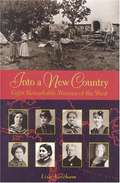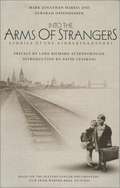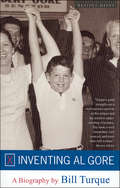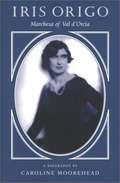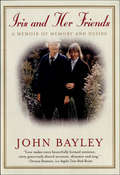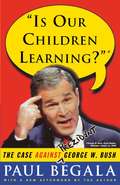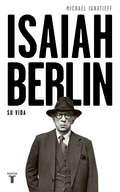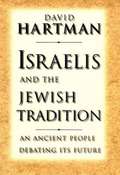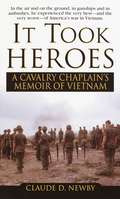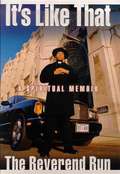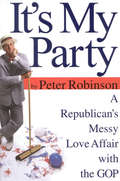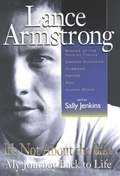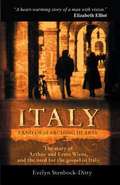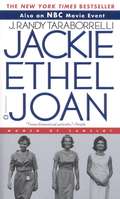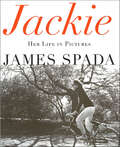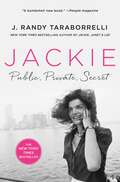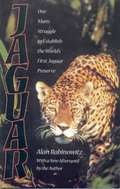- Table View
- List View
In a Sunburned Country
by Bill BrysonA CLASSIC FROM THE NEW YORK TIMES BESTSELLING AUTHOR OF ONE SUMMER Every time Bill Bryson walks out the door, memorable travel literature threatens to break out. His previous excursion along the Appalachian Trail resulted in the sublime national bestseller A Walk in the Woods. In A Sunburned Country is his report on what he found in an entirely different place: Australia, the country that doubles as a continent, and a place with the friendliest inhabitants, the hottest, driest weather, and the most peculiar and lethal wildlife to be found on the planet. The result is a deliciously funny, fact-filled, and adventurous performance by a writer who combines humor, wonder, and unflagging curiousity.Despite the fact that Australia harbors more things that can kill you in extremely nasty ways than anywhere else, including sharks, crocodiles, snakes, even riptides and deserts, Bill Bryson adores the place, and he takes his readers on a rollicking ride far beyond that beaten tourist path. Wherever he goes he finds Australians who are cheerful, extroverted, and unfailingly obliging, and these beaming products of land with clean, safe cities, cold beer, and constant sunshine fill the pages of this wonderful book. Australia is an immense and fortunate land, and it has found in Bill Bryson its perfect guide.From the Trade Paperback edition.
In the Goal With…Briana Scurry (Sports Bio Bookshelf)
by Matthew F ChristopherOn July 10, 1999, at the end of 90 minutes of regulation play plus two 15 minute overtime periods, Briana Scurry faced the greatest challenge of her soccer career. As goalkeeper for the U. S. Women's national team, she would be squaring off against China's best five penalty kickers in a shootout that would determine the winners of the 1999 Women's World Cup. The pressure was enormous -- but Briana Scurry thrives on pressure, which is one reason she's been called the best goalkeeper in the world. Since 1994, she has proven again and again that when the heat's on, she'll stay cool. And that's just what she did that steamy July day . . .
In the Shadow of Revolution: Life Stories of Russian Women from 1917 to the Second World War
by Sheila Fitzpatrick Yuri SlezkineAsked shortly after the revolution about how she viewed the new government, Tatiana Varsher replied, "With the wide-open eyes of a historian." Her countrywoman, Zinaida Zhemchuzhnaia, expressed a similar need to take note: "I want to write about the way those events were perceived and reflected in the humble and distant corner of Russia that was the Cossack town of Korenovskaia." What these women witnessed and experienced, and what they were moved to describe, is part of the extraordinary portrait of life in revolutionary Russia presented in this book. A collection of life stories of Russian women in the first half of the twentieth century, In the Shadow of Revolution brings together the testimony of Soviet citizens and emigres, intellectuals of aristocratic birth and Soviet milkmaids, housewives and engineers, Bolshevik activists and dedicated opponents of the Soviet regime. In literary memoirs, oral interviews, personal dossiers, public speeches, and letters to the editor, these women document their diverse experience of the upheavals that reshaped Russia in the first half of this century. As is characteristic of twentieth-century Russian women's autobiographies, these life stories take their structure not so much from private events like childbirth or marriage as from great public events. Accordingly the collection is structured around the events these women see as touchstones: the Revolution of 1917 and the Civil War of 1918-20; the switch to the New Economic Policy in the 1920s and collectivization; and the Stalinist society of the 1930s, including the Great Terror. Edited by two preeminent historians of Russia and the Soviet Union, the volume includes introductions that investigate the social historical context of these women's lives as well as the structure of their autobiographical narratives.
Incidents in the Life of a Slave Girl
by Harriet Jacobs Nell Irvin PainterA haunting, evocative recounting of her life as a slave in North Carolina and of her final escape and emancipation, Harriet Jacobs's classic narrative, written between 1853 and 1858 and published pseduonymously in 1861, tells firsthand of the horrors inflicted on slaves. In writing this extraordinary memoir, which culminates in the seven years she spent hiding in a crawl space in her grandmother's attic, Jacobs skillfully used the literary genres of her time, presenting a thoroughly feminist narrative that portrays the evils and traumas of slavery, particularly for women and children.
Inside the Halo and Beyond: The Anatomy of a Recovery
by Maxine Kumin"Here is a singular story of survival, an earthly miracle wrought by family devotion, gardens, horses, guts. A compelling read."--Carolyn Heilbrun In July 1998, when Maxine Kumin's horse bolted at a carriage-driving clinic, she was not expected to live. Yet, less than a year later, her progress pronounced a miracle by her doctors, she was at work on this journal of her astonishing recovery. She tells of her time "inside the halo," the near-medieval device that kept her head immobile during weeks of intensive care and rehabilitation, of the lasting "rehab" friendships, and of the loving family who always believed she would heal. "[S]he resonates wisdom while announcing a triumph of body and soul."--Anne Roiphe, New York Times Book Review "Maxine Kumin brings the sensitivity and imagination of a poet to her extraordinary ordeal."--Richard Selzer, author of Mortal Lessons: Notes on the Art of Surgery "From a singular experience she has created a lesson that is universal, which, it seems to me, is the essence of being a poet."--Abraham Verghese, author of The Tennis Partner
Instructions for Visitors: Life and Love in a French Town
by Helen StevensonWhen living abroad, there are two rules to be followed: 1—If you are lucky enough to find a place you belong, you should never actually live there. And 2—Never live with a man you think you could never live without. But then, what fun would that be? In this funny, forthright, and charming memoir, Helen Stevenson chronicles her experiences as a young British expatriate living in the countryside of France. With emotional depth and lyrical sensitivity, Stevenson introduces readers to the myriad residents of the quaint hamlet known only as "le village." There's Stefan, the Maoist tennis buff, who has his own unique way of showing empathy for the masses; Gigi, the chic Parisian who uses her boutique to dress her ex-lovers' girlfriends; and Luc, the cowboy painter and part-time dentist, who, overcoming his aversion to blondes, becomes enamored of the Englishwoman who has been warmly embraced by the rural community. But her troubled love affair with this local lothario comes to represent the poignant truth: she is still, somehow, an outsider. Luc reminds her: "Le village, c'est moi," and she can never say the same. Evoking the languid, sensual essence of Mediterranean France, Instructions for Visitors is a very personal revelation of the wonders and the difficulties of relocating one's home—and one's heart.
Intensive Care: A Doctor's Journal
by John F. MurrayA day-by-day, minute-by-minute account of life in the intensive care unit of a major inner-city hospital, San Francisco General. Murray (medicine, U. of California--San Francisco) escorts readers on his daily ward rounds, introducing them to the desperately ill patients and to the young physicians and medical students who accompany him. They should come away with an understanding of how such wards work on the scientific, mechanical, political, social, and emotional levels.
Intimate Companions: A Triography of George Platt Lynes, Paul Cadmus, Lincoln Kirstein, and Their Circle
by David LeddickPhotographer George Platt Lynes, painter Paul Cadmus, and critic Lincoln Kirstein played a major role in creating the institutions of the American art world from the late 1920s to the early 1950s. The three created a remarkable world of gay aesthetics and desire in art with the help of their overlapping circle of friends, lovers, and collaborators.Through hours of conversation with surviving members with their circle and unprecedented access to papers, journals, and previously unreleased photos, David Leddick has resurrected the influences of this now-vanished art world along with the lives and loves of all three artists in this groundbreaking biography.
Into a New Country: Eight Remarkable Women of the West
by Liza KetchumThe history of the West has traditionally been presented in terms of the accomplishments of men. We now realize that women also played an essential role in the great changes that swept this country, as the West became the destinations of one of the greatest migrations in world history. Here are the stories of eight women from different backgrounds who exemplify the challenges and the opportunities women found as they participated in the westward expansion. Among them Susan Magoffin who journeyed down the Santa Fe trail; Lotta Crabtree who began her career as a child dancing in the camps of gold miners and wound up a nationally known celebrity; Bridget "Biddy" Mason who escaped slavery and eventually became one of the richest women in Los Angeles. Also featured are Susan LaFleche who championed the disregarded rights of Native Americans and Mary Tape, who fought discrimination against the Chinese that was so prevalent at the time. Into a New Country is a book rich in detail and adventure. It is sure to be used repeatedly by young people interested in women's contributions to our common history.
Into the Arms of Strangers: Stories of the Kindertransport
by Mark Jonathan Harris Deborah OppenheimerBetween December 1938 and the outbreak of war in August 1939, some 10,000 children, the vast majority of them Jews, from Germany, Austria, Poland, and Czechoslovakia were evacuated to Great Britain. The stories of 18 witnesses to this Kindertransport--children, parents, and rescuers--are recounted in Into the Arms of Strangers. These first-person accounts are woven into a loose narrative of life before the Nazi era, the transport, and life in their new homes. The editors wisely remain in the background, allowing the survivor testimony to shine through. Their experiences were diverse: some stayed behind, such as Norbert Wollheim, a Kindertransport organizer who refused a number of chances to escape from Germany, knowing that if he did, the transports would be stopped. Lory Cahn was actually on a train when her father pulled her off; he was unable to let her go. Those who made it to England found challenges of their own: some remained in hostels for the remainder of the war; some were taken in by families to work as cheap servant labor; still others were taken in by loving families, but then had to deal with "survivor's guilt." Years after the war, Vera Gissing asked her foster father why he and his family had taken her in. He answered, "I knew I could not save the world. I knew I could not stop the war from starting. But I knew I could save one human life." Into the Arms of Strangers is a moving tribute to this remarkable event.
Inventing Al Gore: A Biography (Biography Ser.)
by Bill TurqueA &“balanced, insightful&” biography of the politician that &“shows how the pressure to succeed has shaped virtually every aspect of Gore&’s career&” (Publishers Weekly, starred review). Why did Al Gore, after angry opposition to the Vietnam War, submit to the draft? What happened in Vietnam that made him sullen and bitter? After he renounced politics, what set this son of a Tennessee senator back on the track mapped out for him? What was the real nature of his partnership with Bill Clinton, and how was it altered by the Lewinsky affair? Inventing Al Gore addresses these issues and more as it unveils the true motivations, ideals, and idiosyncrasies of one of America&’s most inscrutable political figures. Bill Turque, who covered both of Gore&’s vice presidential campaigns and the Clinton White House, draws on extensive access to Gore&’s key advisers, friends, and family. He unmasks a man who in private can sing and dance to George Strait&’s music but in public measures every comment and gesture with legendary caution. As Turque details, Gore&’s great political albatross—a lack of empathy—was hatched during his lonely childhood as the product of ambitious political parents who groomed him for the presidency. Turque&’s keen analysis also uncovers the genesis of Gore&’s questionable fund-raising and of a political platform laden with worthy but emotionally safe planks such as bioethics and global warming. In addition, Inventing Al Gore illuminates how personal tragedies have shaped his political life—and the remarkable influence that women, from his mother to Naomi Wolf, have had on his career. &“Refreshing . . . Turque finds [Gore] to be like so many of the rest of us—occasionally decent, usually flawed, always conflicted.&” —Newsday
Iris Origo: Marchesa of Val d'Orcia
by Caroline MooreheadIris Origo was one of those rare characters who, despite being born with a platinum spoon in her mouth, went on to accomplish great things. In Origo's case, she managed to add light & color to everything she touched & left for posterity a legacy of work, biography, autobiography, & literary criticism that have become recognized as classics of their kind.
Iris and Her Friends: A Memoir of Memory and Desire
by John BayleyA timeless work that will bring healing to anyone dealing with the loss of a loved one. John Bayley began writing Iris and Her Friends, a companion to the New York Times bestseller Elegy for Iris, late at night while his wife, the beloved novelist Iris Murdoch, succumbed to Alzheimer's Disease. As Iris was losing her memory, Bayley was flooded with vivid recollections of his own. In lyrical reverie, Bayley recreates the unforgettable scenes of his youth, from his birth to a civil servant in colonial India to his long romance with Iris and its heartbreaking end. This is the transcendent work of a brilliant man, whose examination of the tragedies and joys of his own life will give readers great healing insight. John Bayley's Iris and Her Friends is nothing less than a classic of true love and sorrow. "Love makes every beautifully formed sentence, every generously shared moment, shimmer and sing."--Donna Seaman, Los Angeles Times Book Review
Is Our Children Learning?: The Case Against George W. Bush
by Paul Begala"Is Our Children Learning?" examines the public life and public record of George W. Bush.
Isaiah Berlin: Una biografía
by Michael IgnatieffIsaiah Berlin. Una biografía es una de esas raras biografías en las que la fuerza del personaje está por encima de su propia obra. Isaiah Berlin nunca quiso escribir su autobiografía -«No me considero un tema de reflexión lo suficientemente importante o interesante»-, dijo en una ocasión. Pero para muchos era justamente lo contrario: no solo era uno de los principales filósofos liberales de este siglo, sino que su propia vida fue una vívida y apasionante crónica de nuestro tiempo. Michael Ignatieff ha recogido en este libro la primera biografía autorizada de Berlin, fruto de las conversaciones que mantuvieron durante la última década de su vida. Un trabajo de admirable identificación con su protagonista, donde el lector percibe todo el sentido del humor de Berlin y recupera, como viviéndolos, los recuerdos del maestro. Sus encuentros con Virginia Woolf y Wittgenstein, sus momentos de inspiración y de duda, su talento para gozar de la vida.
Israelis and the Jewish Tradition: An Ancient People Debating its Future
by David HartmanOne of the most important Jewish thinkers in the world today grapples with issues that increasingly distance Israel's secular Jewish community from its religious Zionists. Hartman, who is deeply committed to religious pluralism, suggests a more inclusive and inviting framework for the modern Israeli engagement of the Jewish tradition.
It Took Heroes: A Cavalry Chaplain's Memoir of Vietnam
by Claude D. NewbyThe soldiers in 1st Cav fought some of Vietnam’s fiercest battles— and Chaplain Newby was there right beside them. For grunts in Vietnam, the war was a jungle hell of sudden death, endless suffering, and supreme courage. For Chaplain Newby, it was an honor to be chosen to share it with them. In enemy-held highlands and fetid jungles, Newby regularly accompanied patrols, company-sized missions, chopper strikes, and air rescues—sharing the men’s dreams, their fears, and their dying moments. Searing, brutally accurate, and dedicated to the truth, Claude Newby’s account of brave men fighting a tragic war captures that time in all its horror and heroism. Newby doesn’t shrink from exposing the war’s darker side; his quiet description of the murderous events that came to be known as “the Mao incident” proves that justice can prevail. Ultimately, Newby’s riveting stories reveal the tremendous valor and sacrifices of ordinary Americans facing constant danger, shattering losses, and an increasingly indifferent nation. His book is a shining tribute to those who fought, those who died, and those who came home to a country determined to forget them. From the Paperback edition.
It's Like That
by Joseph Simmons RunMoney, success, and widespread adulation: Run of Run-DMC, one of the first rappers to achieve nationwide recognition and top-selling albums, seemed to have it all in his heyday. But the dizzying effects of fame soon left Run feeling empty and dissatisfied. Stuck in a pit of despair, he went through the motions of his public life while grappling with his loss of direction and a family life that was falling apart. Here is the story of how he turned his life around, discovering a wellspring of spirituality within himself and a special connection with God. Now an ordained minister, Run talks in this extraordinary book about his profound life change and getting the message out to the community. Still a major rap performer, with an album entitled Crown Royal and frequent appearances on MTV, Run is truly a rennaissance man. A spiritual memoir unlike any other, It's Like That captures the innocence of youth, the pain of chaos, and the joy that one can only find through righteous living. This is an epic and absorbing tale from one of the most popular and complex performers of our times.
It's My Party: A Republican's Messy Love Affair with the GOP
by Peter RobinsonMy views were Republican, I voted Republican, I worked in a White House that was Republican. I had to admit it. I was as Republican as they come. That may have been obvious to you, but it came as a rude awakening to me. IT'S MY PARTY After Ronald Reagan, after George Bush, after Bill Clinton, where is the Republican Party headed today? This is exactly the question former White House speechwriter and special assistant to the president Peter Robinson asked himself--and the answers he discovered surprised even him. IT'S MY PARTY is part irreverent memoir, part "travel diary," and part impassioned call to arms. In it, Robinson shows just what the GOP has got going for it--and how its most triumphant years are yet to come. Along with Robinson's personal, and sometimes hilarious, lifelong relationship with Republicanism, IT'S MY PARTY takes us through history and geography to trace the party's roots. It pushes the hot buttons of headline issues that other political professionals are afraid to touch. It introduces us to both the party's leaders and its foot soldiers, from George Bush, Sr. to Rep. Chris Cox, from Newt Gingrich to Bret Schundle
It's Not About the Bike - My Journey Back to Life
by Lance Armstrong Sally JenkinsThe emotional, courageous story of an American World-Class bicyclist who is stricken with testicular cancer and his journey back to the peak of his sport - Tour de France winner.
Italy, Land of Searching Hearts: The Story of Arthur and Emma Wiens, and the Need for the Gospel in Italy
by Evelyn Stenbock-DittyA True Story from the forgotten mission field of Europe. "Italy is one of the most neglected mission fields in all Europe. Art Wiens has had a lifetime of service there and he is one of my heroes." George Verwer, Operation Mobilisation. "Art and Erma Wiens are the true prototype of those who have led the way in missionary work in Europe... will help in the understanding of the challenge of Europe as a mission field."
Jackie, Ethel, Joan: Women of Camelot (Core Ser.)
by J. Randy TaraborrelliOver the years there have been many books published about the Kennedy family, individually and collectively. But only this book provides a powerful and detailed look at the complex relationships shared between the three women who were not born Kennedy but who married into the family: Jackie Bouvier, Ethel Skakel, and Joan Bennett. For each of the Kennedy wives, the Camelot years provided an entirely different experience of life lessons. These were the years when Jackie's dreams became reality, but at a hefty price. For Ethel, these were years of frustration where her dreams of being First Lady were dashed and she sank into a deep depression. For Joan, her years as a Kennedy wife were the most confusing of her life, and she is now a recovering alcoholic. This fascinating story is set against a panorama of explosive American history, as the women cope with Jack's and Bobby's alleged affairs with Marilyn Monroe, their tragic assassinations, and other tragedies and scandals. Whether dealing with their husbands' blatant infidelities, stumping for their many political campaigns, touring the world to promote their family's legacy or raising their children, the Kennedy wives did it all with grace, style, and dignity. In the end, JACKIE, ETHEL, JOAN is a story of redemption and great courage.
Jackie: Her Life in Pictures
by James SpadaFrom the New York Times–bestselling author: “These 251 black and white photos capture her well-lived, much-photographed life in adoring detail.” —Publishers WeeklyA legendary life shown in rare, mostly never before published photographs. Arguably the most famous woman of the twentieth century, certainly one of its most photographed, Jacqueline Bouvier Kennedy Onassis lived an astonishing life; her popularity and the fascination she held for people the world over during her nearly sixty years in the spotlight can hardly be overestimated. And while that has led to a number of books about her, none has told her life story in the way this one does—entirely in photographs, from birth to death, with lively, anecdotal extended captions.Of the 251 photographs in Jackie: Her Life in Pictures, 165 have never been published, 58 have rarely been published (in newspapers or magazines but never in book form), and 28 are inescapable images that have been seared into the memories of everyone. Together with the text by James Spada that runs alongside them, these pictures tell the story of an American life that became legendary even while it was being lived, a story that will speak afresh to the hearts of all Americans.“In this sophisticated, beautifully produced work, he has chosen to let the photos of Jackie do all the talking. And she tells everything, with the help of his insightful and detailed captions to help propel the story . . . Spada has much to be proud of.” —The Austin Chronicle“This cradle-to-grave retrospective of one of the 20th century's most public lives does justice to its subject as well as its readers.” —The Advocate
Jackie: Women Of Camelot
by J. Randy TaraborrelliTHE INSTANT NEW YORK TIMES BESTSELLER!From the New York Times bestselling author of Jackie, Janet & Lee comes a fresh and often startling look at the life of the legendary former first lady, Jacqueline Kennedy Onassis.Based on hundreds of interviews with friends, family, and lovers over a thirty-year period—as well as previously unreleased material from the JFK Library—Kennedy historian J. Randy Taraborrelli paints an unforgettable new portrait of a woman whose flaws and contradictions only serve to make her even more iconic. “I have three lives,” Jackie told a former lover, “public, private and secret.” In this revealing biography, readers will become intimately familiar with all three. New insights from the book include:· Jackie’s cold feet before her wedding to Jack Kennedy and her secret plan to avoid moving into the White House with him.· Jackie's plan to meet with the woman with whom her husband, Aristotle Onassis, was again having an affair, Maria Callas…and why, in the end, she decided against it.· The truth about the nude photos of Jackie which scandalized her in the 1970s…and which family member had betrayed her by selling them.· Her unusual relationship with Maurice Templesman, which was never what outsiders believed it to be.· The never-before-reported, last-ditch efforts to save Jackie’s life with experimental cancer treatments, and the doctor who wouldn’t risk jail time in order to treat her.Decades after her death and over sixty years after the assassination of President Kennedy, Jackie delivers the last word on one of the most famous women in the world.
Jaguar: One Man's Struggle To Establish The World's First Jaguar Preserve
by Alan RabinowitzIn 1983, zoologist Alan Rabinowitz ventured into the rain forest of Belize, determined to study the little-known jaguar in its natural habitat and to establish the world's first jaguar preserve. Within two years, he had succeeded. <P><P>In Jaguar he provides the only first-hand account of a scientist's experience with jaguars in the wild. <P><P>Originally published in 1986, this edition includes a new preface and epilogue by the author that bring the story up to date with recent events in the region and around the world.
